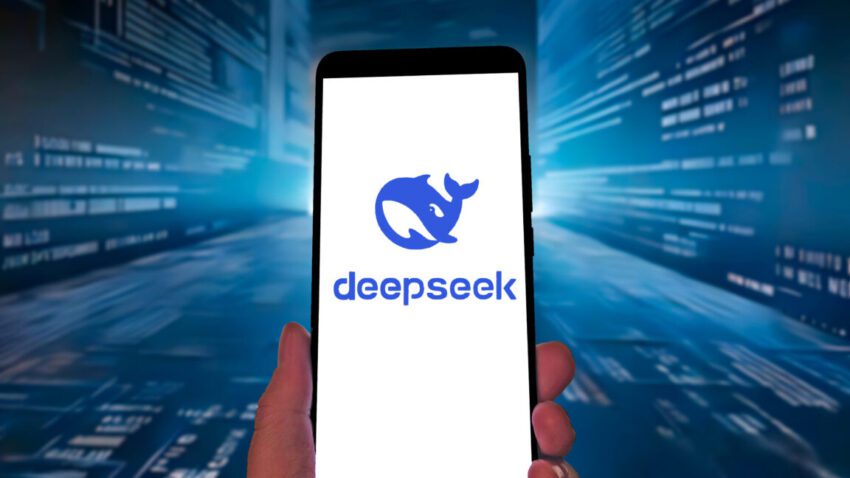
deepseek tests sparse attention to slash ai DeepSeek has introduced a new experimental language model that aims to significantly reduce AI processing costs through an innovative technique known as “sparse attention.”
deepseek tests sparse attention to slash ai
The Challenge of Long Sequences in AI
In the realm of artificial intelligence, particularly in natural language processing (NLP), the ability to handle long sequences of text presents a formidable challenge. This issue is particularly evident in applications like ChatGPT, where users often experience slowdowns during extended conversations. The underlying reason for this lag is a fundamental mathematical challenge: processing lengthy text sequences demands substantial computational resources. Even with various efficiency optimizations that tech companies have implemented, the problem persists.
For major U.S. tech giants, the solution often lies in simply scaling up their hardware capabilities. These companies can invest heavily in advanced computing resources to manage the computational load associated with processing long text sequences. However, the landscape is different for companies like DeepSeek, a Chinese AI firm that faces export restrictions limiting its access to cutting-edge AI chips. This situation creates a pressing need for DeepSeek to innovate and extract maximum performance from the hardware it can access.
Introduction of DeepSeek-V3.2-Exp
On Monday, DeepSeek unveiled an experimental version of its latest simulated reasoning language model, named DeepSeek-V3.2-Exp. This model introduces a novel approach called “DeepSeek Sparse Attention” (DSA). This technique represents the company’s adaptation of sparse attention, a computational method that has been gaining traction in the AI community.
The Origins of Sparse Attention
Sparse attention is not a new concept; it has been in development for several years. OpenAI was one of the pioneers of this approach, introducing sparse transformers in 2019 as part of the architecture for its GPT-3 model. Around the same time, Google Research also made significant contributions to the field with its “Reformer” models, which utilized similar principles to enhance efficiency in processing sequences.
Despite the known advantages of sparse attention, the extent to which Western AI companies currently incorporate this technique into their latest models remains largely undisclosed. This lack of transparency makes it challenging to gauge the competitive landscape fully. However, DeepSeek claims that its implementation of sparse attention achieves “fine-grained sparse attention for the first time,” which could set it apart from existing models.
Efficiency Gains and Cost Reductions
One of the most compelling aspects of DeepSeek’s announcement is its assertion that the introduction of DSA has led to a remarkable 50 percent reduction in API prices. This significant cost-cutting measure is a direct result of the efficiency gains realized through the new sparse attention mechanism. By optimizing how the model processes information, DeepSeek aims to make its AI offerings more accessible to businesses and developers.
Implications for the AI Landscape
The implications of DeepSeek’s advancements extend beyond mere cost reductions. If the company’s claims hold true, it could lead to a paradigm shift in how AI models are developed and deployed. Lower processing costs could democratize access to advanced AI capabilities, enabling smaller companies and startups to leverage sophisticated NLP technologies that were previously the domain of larger corporations.
Moreover, the introduction of DSA may prompt other AI companies to reevaluate their approaches to model efficiency. If DeepSeek’s sparse attention technique proves effective, it could inspire a wave of innovation aimed at optimizing existing models and developing new ones that prioritize computational efficiency.
Stakeholder Reactions
The announcement of DeepSeek-V3.2-Exp has elicited a range of reactions from stakeholders across the AI ecosystem. Industry analysts have expressed cautious optimism about the potential of DSA to reshape the competitive landscape. Some experts believe that if DeepSeek can deliver on its promises, it may challenge the dominance of established players in the AI space.
However, skepticism also exists. Some analysts point out that while the concept of sparse attention is promising, the practical implementation of such techniques can be fraught with challenges. The effectiveness of DSA in real-world applications remains to be seen, and further testing will be necessary to validate DeepSeek’s claims.
Broader Context of AI Development
To fully appreciate the significance of DeepSeek’s announcement, it is essential to consider the broader context of AI development. The race to create more efficient AI models is intensifying, driven by the increasing demand for powerful NLP applications across various industries. From customer service chatbots to content generation tools, the need for scalable and cost-effective AI solutions is more pressing than ever.
Additionally, the geopolitical landscape plays a crucial role in shaping the future of AI technology. With export restrictions affecting Chinese companies like DeepSeek, there is a heightened sense of urgency to innovate within the constraints of available resources. This situation may lead to a more fragmented AI ecosystem, where companies in different regions pursue divergent paths to achieve similar goals.
Future Prospects for DeepSeek
Looking ahead, the future prospects for DeepSeek hinge on the successful implementation and validation of its sparse attention technique. If the company can demonstrate that DSA delivers on its promises of efficiency and cost reduction, it may position itself as a formidable player in the AI landscape.
Moreover, the success of DeepSeek-V3.2-Exp could pave the way for further advancements in the field of NLP. As more companies explore the potential of sparse attention and other optimization techniques, the overall landscape of AI development may shift toward a focus on efficiency and accessibility.
Conclusion
DeepSeek’s introduction of its experimental language model, DeepSeek-V3.2-Exp, marks a significant step in the ongoing quest for more efficient AI processing. By leveraging the concept of sparse attention, the company aims to reduce costs and enhance performance, potentially reshaping the competitive dynamics of the AI industry. As the technology continues to evolve, stakeholders will be watching closely to see how DeepSeek’s innovations impact the broader landscape of artificial intelligence.
Source: Original report
Was this helpful?
Last Modified: October 1, 2025 at 5:35 am
0 views















